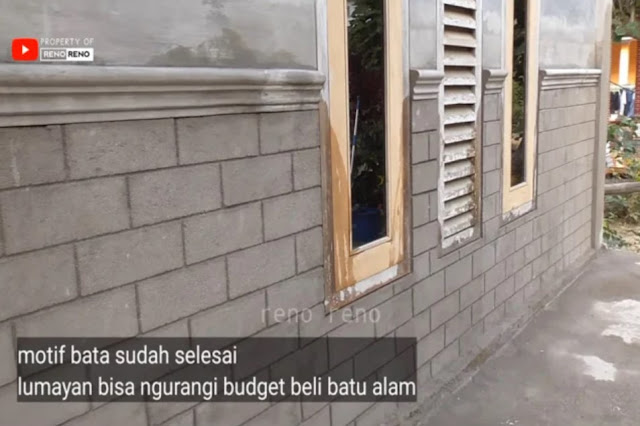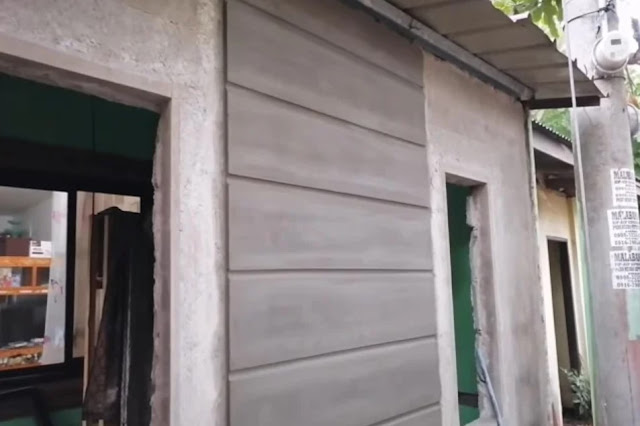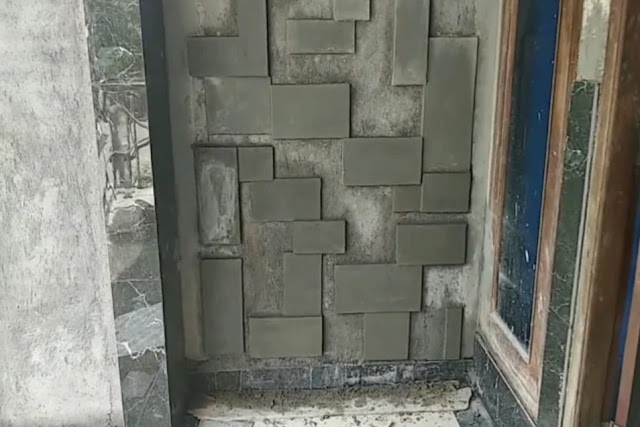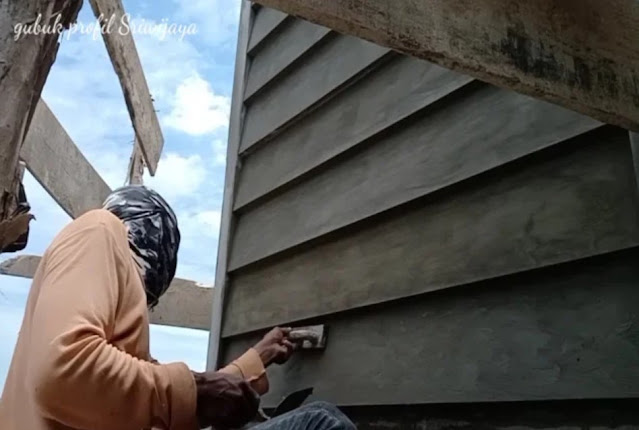For those of you who want to make the walls of the house more varied and unique, the following motifs for plastering the walls of the front of the house can be considered.
Variations on the front wall of the house can apparently be made with unusual motifs.
Not only Kampot motifs, but you can also make other motifs.
So, instead of just plain stucco walls, it's better to use a motif to make it look more attractive.
Well, there are a number of wall stucco motifs that you can use as inspiration.
Some of the stucco motifs turned out to be quite straightforward.
Come on, just look at the wall stucco motifs for your home.
11 Plastering Motifs for the Front Wall of the House
1. Brick motif
Brick is a simple stucco motif for the front wall of the house.
You can use this motif as an alternative to exposed brick or terracotta walls.
That way, you can save more on expenses.
To make a motif like this, use a mold so that the result is much neater.
2. Natural Stone Motif
Next is the natural stone motif.
Unlike before, this stucco has a stone temple motif.
For maximum results and close to the original, use a good quality natural stone coating paint.
3. Kamprot motif
You could say, Kampot wall motifs are quite widely used by the public.
Besides being unique, the Kampot walls will also look aesthetic if they are made with cool motifs.
For example, the motif of this plaid Kampot wall.
The Kampot wall was made simply without using a spray gun.
You can also make a tool to make a mosquito net wall from mosquito net.
4. Industrial Square Motif
Planning to build an industrial house?
The industrial house is thick with the feel of being exposed on the walls.
Well, you can make variations of the outer walls of the house with this one motif.
A square motif with a circle at each end will look elegant if made perfectly.
5. Water rope motif
The next stucco motif for the house's front wall is water rope.
The variation of the waterway wall is very simple and simple.
Line motifs like this will be very suitable for modern minimalist homes.
Interested in the water rope motif?
See other articles:
- double floor normal house front elevation designs
- simple geometric wall design
- modern single floor house design
- house design for small lot
- indian house colour combination outside
6. Square Motif
Square motifs are pretty much chosen as a variation of the walls of the house.
Besides being simple, square motifs are also suitable for various home concepts.
You can apply it to the outer wall of the house such as a fence or a neighbor's wall barrier.
7. Maze Motive
Want the walls of the house to look unique?
Choose a stucco motif for the front wall of the house with a maze design.
The labyrinth wall stucco motif makes the exterior stand out.
Especially if the results are neat and perfect.
For a cooler result, choose the right paint combination for the wall.
8. Aesthetic Motives
The stucco motif on the front wall of the house that you can also use as a reference is aesthetic design.
With aesthetic motifs, the exterior of the house is guaranteed to look more prominent.
You can also give a beautiful color combination.
However, making this aesthetic wall plaster is quite difficult.
It takes skill to make it.
9. Random Square Motif
For those of you who like simple and unique motifs, don't hesitate to choose a random gingham.
You can apply this stucco motif to the exterior of the house.
One of them is a terrace as a substitute for ceramic wall terraces.
10. Pattern Arrangement
Next is the stacking motif.
The stacking motif is still rarely used in homes.
In fact, this one-wall stucco motif is no less cool.
Moreover, if it is in the process of painting and the results are neat.
11. Andesite Relief Motif
The inspiration for the stucco motif on the front wall of the last house is the andesite relief motif.
The andesite relief motif is an alternative to the original natural stone.
Even though the walls are plastered, the results look similar if they are made with care.
It takes expertise in making natural stone wall stucco motifs like this.
How? Which motif did you choose?











